32 Amazing Traditional French Pastries You Can Master
French pastries represent a delectable art form that transforms simple ingredients into extraordinary culinary masterpieces.
Bakers craft these delicate creations with precision, passion, and generations of inherited techniques.
Each pastry tells a story of regional traditions and cultural heritage.
Skilled artisans meticulously balance flavors, textures, and visual aesthetics to produce edible works of art.
Butter, flour, and sugar become something magical under practiced hands.
Intricate layers and delicate decorations showcase the incredible skill of French pastry chefs.
These sweet delights reflect a deep respect for culinary craftsmanship and gastronomic excellence.
Follow along to learn about these 32 traditional French pastries that will tantalize your taste buds:
Which Traditional French Pastries Should You Taste First?
France is legendary for its pastries, flaky, buttery, and sometimes filled with cream or fruit. Experience the magic of a Parisian bakery right from your own table.
Croissant
Croissants are buttery, golden-brown French pastries with a fascinating historical origin tracing back to Austria's military triumph over Ottoman forces in 1683.
French bakers perfected these flaky, crescent-shaped delicacies using pure butter and slightly sweet yeast dough.
Austrians originally created the kipfel pastry to commemorate their victory, symbolically mimicking the crescent moon from the Turkish flag.
When baked correctly, croissants reveal a yellow-white interior with a delicate elastic texture that stretches softly when pulled.
Expert bakers carefully layer butter within the dough to create multiple thin, crispy levels.
Rich butter gives these pastries their signature golden color and irresistible aroma.
Warm croissants taste best when served with fresh jam or an additional butter spread.
French bakeries continue to maintain this beloved pastry's traditional preparation methods.
Pain Au Chocolat
Pain au chocolat represents a classic French pastry featuring buttery, flaky layers wrapped around rich chocolate sticks that create a decadent breakfast or snack experience.
French bakers craft these rectangular rolls using yeast-leavened dough carefully folded with chocolate ganache or chocolate sticks.
Southwest France often calls this pastry "chocolatine" instead of its traditional name, with some regions like Bordeaux maintaining unique pricing distinctions between the two terms.
Bakeries throughout France serve these warm, crisp pastries fresh from ovens in local bakeries and supermarkets.
Restaurants and cafes frequently offer pain au chocolat as a morning staple or afternoon treat.
Students and workers grab these pastries for quick, satisfying meals.
Chocolate lovers appreciate the contrast between crisp, buttery layers and smooth chocolate filling.
Generations of French families have enjoyed this simple yet elegant breakfast item.
Kouign-Amann
Kouign-amann is a decadent French pastry from Bretagne featuring multiple buttery, caramelized layers of dough that transform simple ingredients into a crispy, sugar-glazed delicacy.
Originating in the 1800s, this flaky cake earned its name from Breton words meaning "butter cake" in a region known for rich baking traditions.
Bretons boast it as potentially the world's fattiest pastry, with its golden layers created through precise folding techniques.
Legendary stories suggest its creation was an accidental discovery by a baker in Douarnenez trying to salvage failed dough.
Traditional preparation involves carefully layering butter and sugar into thin pastry sheets.
Precise folding creates its signature crisp exterior and soft, caramelized interior.
Multiple turns during preparation ensure maximum flakiness and richness.
Bakeries across Bretagne continue to celebrate this iconic sweet treat that represents regional culinary innovation.
Choux A La Creme
Choux a la creme are elegant French pastry puffs crafted from delicate, airy shells bursting with smooth cream and dusted with powdered sugar.
French bakers create these delicate treats by baking light, hollow pastry shells made from choux dough, which puff up dramatically during cooking.
Skilled pastry makers carefully fill these golden-brown shells with either rich pastry cream or fluffy whipped cream through strategic openings.
Bakers typically prepare two filling techniques: splitting the puff in half and layering cream or making a small bottom incision for precise cream insertion.
North Americans commonly call these pastries cream puffs, though they differ slightly from profiteroles.
European bakeries often serve these sweet delicacies as dessert or elegant party treats.
Powdered sugar adds a final elegant touch to these crisp, creamy confections.
Originating in France, choux a la creme remain a beloved classic in international pastry traditions.
Eclair
Eclairs are elegant French pastries with a lightning-fast shine and crispy shell that conceal a creamy, dreamy interior.
Originating in France around the early 1900s, these elongated treats likely emerged from Marie-Antoine Careme's culinary innovations.
Named for their gleaming surface that reflects light like lightning, eclairs feature a delicate choux pastry exterior and rich filling.
French bakers traditionally crafted them with classic vanilla or chocolate cream centers.
Boston Cooking School Cook Book documented their earliest known recipe in 1884.
Modern variations now include adventurous flavors like green tea and lemon cream.
Global pastry shops continue to celebrate these sophisticated desserts.
Eclairs remain a beloved sweet treat that combines delicate technique with irresistible taste.
Brioche
Brioche is a luxurious French pastry blending bread and cake characteristics with an exceptionally rich, buttery texture.
Norman Vikings likely pioneered its creation during their 9th-century French settlements, introducing advanced butter-making techniques.
French bakers perfected this delicacy over centuries, transforming it into a sophisticated bread-pastry hybrid.
Its name originates from medieval French words bris and hocher, signaling kneading and stirring methods.
First documented in writing during 1404, brioche quickly became a marker of culinary refinement.
High butter, milk, and egg content create its signature soft, flaky consistency.
Wealthy classes initially cherished brioche as a status symbol.
Generations of French bakers have continued refining this beloved bread, ensuring its enduring popularity across France and beyond.
Profiteroles
Profiteroles are delicate French pastry puffs with a rich culinary history dating back to the 13th century.
French and German bakers originally crafted these light, airy shells from delicate puff pastry initially filled with savory cheese and herb mixtures.
Sweet variations emerged over time, with the pastries gaining their unique name "choux" due to their cabbage-like appearance.
By the 19th century, profiteroles transformed into elegant desserts decorated as swans or pyramids and served alongside wine, tea, or coffee.
Bakers now fill these crisp pastry shells with various delightful ingredients like whipped cream, custard, pastry cream, or vanilla ice cream.
Modern versions are typically topped with rich chocolate sauce for extra indulgence.
European restaurants and bakeries continue to celebrate these versatile pastry treats.
Chocolate-covered profiteroles remain a beloved dessert across France and beyond.
Beignets
Beignets are deep-fried pastry squares originating from France that became a beloved New Orleans specialty after Acadian settlers introduced them to Louisiana.
French settlers brought these sugary treats to Canada's Acadia region in the 17th century before migrating to Louisiana's vibrant culinary landscape.
New Orleans embraced beignets so deeply that the city officially declared them the state donut in 1986.
Cafe Du Monde, a famous restaurant in the French Quarter, popularized these powdered sugar-covered pastries as a signature breakfast item.
Traditionally served hot, beignets pair perfectly with chocolate milk or cafe au lait, creating a classic Southern breakfast combination.
Restaurant patrons enjoy these crispy, sweet squares as a quintessential New Orleans indulgence.
Tourists and locals alike flock to Cafe Du Monde to savor these iconic pastries.
Beignets continue to represent Louisiana's rich French culinary heritage and multicultural food traditions.
Paris-Brest
Paris-Brest is a legendary French pastry born from an epic bicycle race, featuring a circular choux pastry design mimicking a bicycle wheel.
Created in 1910 by chef Louis Durand near Paris, this iconic dessert celebrates athletic endurance through culinary artistry.
French patisseries showcase the pastry's unique ring shape, crafted from light pate a choux dough sprinkled with flaked almonds.
Bakers carefully bake the pastry until achieving a perfect golden-brown color and crisp exterior.
Master pastry makers slice the airy ring horizontally and generously fill it with creamy hazelnut and almond praline mousseline.
Powdered sugar dusts the top crust, adding a delicate sweet finish.
France's cycling history lives on through this delicious pastry that connects sport and sweet tradition.
Chouquette
Chouquettes are delicate French pastry puffs crafted from airy pate a choux dough and generously sprinkled with pearl sugar crystals that maintain their crunch during baking.
Originating in Vienna and popularized in France, these light pastries resemble hollow profiterole shells without filling.
Bakeries across France serve chouquettes as popular breakfast treats or afternoon snacks called le gouter.
Bakers create these treats by piping soft dough onto baking sheets and coating them with coarse sugar before baking.
Traditional French bakeries prepare chouquettes using simple ingredients like butter, eggs, flour, and water.
Pearl sugar gives these pastries their signature sweet crunch and distinctive appearance.
French families often enjoy these simple yet elegant pastry puffs with coffee or tea.
Religieuse
Religieuse are elegant French pastry towers combining two perfectly stacked choux pastry spheres, symbolizing a graceful nun's silhouette through their distinctive round shape and chocolate ganache coating.
Originating in 19th century Paris, these intricate desserts feature delicate choux pastry shells filled with smooth crème pâtissière and connected by rich buttercream.
Frascati, a renowned Parisian pastry chef, pioneered this iconic sweet creation with its initial rectangular design later evolving into the current round form.
Historical evidence suggests the dessert's name and appearance were directly inspired by religious habits worn by nuns.
Each religieuse combines contrasting pastry sizes, with a smaller sphere perched atop a larger base, creating a visually striking dessert.
Chocolate ganache cascades down the pastry, enhancing its elegant presentation and adding depth to its flavor profile.
Traditional recipes maintain the original technique of carefully assembling and decorating these miniature pastry masterpieces.
St. Honore Cake (Gateau Saint-Honore)
Saint honore cake embodies French pastry mastery through its complex layering of textures and flavors from a crisp puff pastry base to delicate cream puffs.
Originating in 19th century France, this dessert honors Saint Honore, the patron saint of bakers, with its intricate construction.
Skilled pastry makers carefully craft a foundation of buttery puff pastry and generously pipe rich vanilla custard across its surface.
Cream puffs dipped in golden caramelized sugar crown the cake, creating a stunning visual and taste experience.
Each element requires precision and expertise to balance delicate textures and intense flavors.
Traditionally served during celebrations and special events, the saint honore cake represents the pinnacle of French confectionery artistry.
Pastry chefs consider this dessert a true test of their technical skills and creativity.
Few desserts capture French culinary excellence as beautifully as this remarkable sweet creation.
Gougeres
Gougères are delicate French cheese puffs originating from Burgundy, featuring a crisp exterior and airy interior crafted from choux pastry and rich, melted Comté or Gruyère cheese.
Classic French bakeries and home kitchens across France create these light pastry bites as elegant appetizers or cocktail party snacks.
Chefs carefully mix butter, water, flour, eggs, and grated cheese to form a smooth, glossy dough before piping small rounds onto baking sheets.
Each gougère puffs up dramatically during baking, creating a hollow center perfect for holding subtle cheese flavors.
Professional bakers recommend serving these savory treats warm for maximum texture and taste.
Restaurants and wine bars often pair gougères with champagne or white wine to enhance their subtle cheese notes.
Traditional recipes date back generations in French culinary history.
Regional variations exist throughout France, with some bakers adding herbs or spices to their signature cheese puff recipe.
Mille-Feuille
Mille-feuille represents a delicate French pastry featuring multiple thin, crisp layers of buttery puff pastry stacked with smooth cream filling and delicately glazed on top.
French bakers carefully craft this dessert by alternating precise layers of golden pastry with rich custard or whipped cream, creating a complex texture that shatters and melts in you mouth.
Originating from a 1651 cookbook by La Varenne, the pastry's name translates to "thousand leaves" and reflects its intricate construction.
Confectioners often top the dessert with powdered sugar or chocolate icing for added visual appeal.
Despite its popular nickname "Napoleon," the name actually references Naples, Italy, not the famous emperor.
Bakeries across France prepare variations using different cream fillings like vanilla custard, fruit purees, or nut-based pastes.
Traditional mille-feuille requires exceptional skill to maintain crisp pastry layers without compromising the delicate cream between them.
Canele
Canelés are delicate French pastries originating in Bordeaux, featuring a silky custard center enclosed by a crisp, caramelized shell crafted through precise baking techniques.
Rooted in monastic traditions, these small cakes emerged from nuns at the Annunciation convent who initially produced sweet treats for impoverished locals.
Bordeaux bakers refined the recipe in 1830, transforming the humble confection into a regional culinary treasure.
Copper molds create their distinctive rum-infused flavor and distinctive shape, ensuring a crackling exterior and creamy interior.
Traditional ingredients include eggs, milk, butter, sugar, and dark rum, which contribute to their complex taste profile.
Parisian patisseries now feature these iconic pastries, spreading their reputation beyond southwestern France.
Specialized bakeries meticulously prepare canelés, maintaining stringent standards for texture and appearance.
Modern pastry chefs continue experimenting with innovative flavor variations while respecting the classic preparation method.
Croquembouche
Croquembouche is a spectacular French wedding dessert featuring towering cone-shaped pastry structures crafted from cream-filled profiteroles and held together by golden caramel.
French chef Antonin Careme invented this dramatic centerpiece in the late 1700s, creating a dessert whose name literally means "crunch in mouth" from its crispy caramelized texture.
Skilled pastry makers carefully arrange delicate choux pastry balls into perfect conical shapes, meticulously gluing each piece with hardened caramel.
Decorative elements like spun sugar, sugar-coated almonds, fondant flowers, and occasional macarons transform the tower into an edible art piece.
Wedding guests marvel at the intricate construction and crisp layers of sweet pastry.
Each profiterole bursts with rich custard cream, providing a luxurious contrast to the crunchy caramel exterior.
Traditional French celebrations consider this dessert a symbol of culinary excellence and festive elegance.
Chaussons Aux Pommes
Chaussons aux pommes are classic French pastry turnovers brimming with warm, spiced apple filling encased in flaky golden puff pastry.
French bakers create these sweet treats by combining chopped apples with sugar and cinnamon, nestling the mixture into delicate pastry circles.
Originating in Saint Calais during a 1630 epidemic, these turnovers emerged when a Chatelaine generously distributed flour and apples to hungry townspeople.
Skilled pastry makers fold the dough into perfect half-moon shapes, carefully sealing edges with egg wash.
Bakers brush the pastry with beaten eggs to achieve a glossy, rich surface.
Traditional recipes involve minimal ingredients like fresh apples, flour, sugar, and cinnamon.
Puff pastry provides a light, crisp exterior that contrasts beautifully with the soft, sweet apple interior.
Regional variations might include adding vanilla or nutmeg to enhance the filling's depth of flavor.
Praluline
Praluline represents a luxurious French brioche masterpiece invented by Auguste Pralus in 1955, featuring rose sugar-coated pralines blended into soft, buttery bread.
Valencia almonds and Piedmont hazelnuts enrobed in delicate rose sugar create its signature crunch and sweet profile.
Pralus developed this unique pastry in his small Roanne bakery, transforming traditional bread into an extraordinary treat.
Rose-colored pralines give the brioche a stunning visual appeal and distinctive nutty flavor.
Each slice offers a perfect balance of smooth bread and crisp sugar-coated nuts.
Regional bakers continue Pralus's legacy by maintaining his original recipe.
Praluline remains a celebrated specialty in French pastry shops.
Visitors often purchase this iconic sweet bread as a memorable culinary souvenir.
Pain Aux Raisins
Pain aux raisins are delicate French spiral pastries crafted from layers of buttery, yeasted dough rolled with sweet custard cream and plump raisins.
Traditional bakeries across France create these delicate swirls by carefully spreading rich pastry cream and raisins across thin, laminated dough.
Skilled bakers meticulously fold and twist the dough into elegant snail-like shapes, ensuring each pastry develops a crisp, golden exterior during baking.
Originating in Paris, these pastries blend classic French baking techniques with simple, sweet ingredients.
Bakery display cases often showcase these treats alongside other morning pastries.
Raisins tucked inside provide bursts of natural sweetness against the creamy, buttery backdrop.
Home bakers and professionals alike enjoy creating these intricate breakfast treats.
Tarte Tropezienne
Tarte tropezienne fuses French pastry artistry with creamy indulgence, featuring a halved orange-flavored brioche stuffed with luxurious cream fillings.
Alexandre Micka, a Polish pastry chef, introduced this iconic dessert to France in 1950, later gaining fame when actress Brigitte Bardot christened it during a movie shoot in Saint-Tropez.
Micka's secret recipe allows for diverse cream variations, including pastry cream, buttercream, and creme diplomat.
Bakers typically slice the soft brioche horizontally and generously fill it with silky cream layers.
Sliced almonds, pearl sugar, or a delicate dusting of powdered sugar crowns the dessert's surface.
Movie stars and locals alike have savored this sweet sensation since its serendipitous creation.
French bakeries continue celebrating this beloved treat, honoring its charming origin story.
Palmiers
Palmiers are elegant French pastries shaped like butterfly wings or elephant ears, crafted from buttery puff pastry generously coated with caramelized sugar.
French bakeries originated these crispy, sweet treats that transform simple ingredients into a delicate dessert with a golden, flaky texture.
Pastry chefs carefully roll sugar-covered dough into distinctive heart-like shapes before slicing and baking them to create a crunchy, caramelized exterior.
These light, crisp cookies originate from classic French patisserie traditions and are popular in cafes and bakeries across France.
Palmiers provide a perfect balance of sweetness and crunch, making them an irresistible accompaniment to coffee or tea.
Home bakers and professionals alike enjoy creating these simple yet sophisticated pastries.
Pate Lorrain
Pate Lorrain represents a classic French pastry-wrapped meat delicacy originating from Lorrain region's culinary traditions.
French cooks carefully marinate meat - traditionally a pork and veal blend - in a rich wine and herb mixture featuring thyme, parsley, bay leaves, and shallots.
Baccarat commune claims this dish's historical roots, where skilled preparation involves meticulously slicing and seasoning the meat.
Cooks completely enclose the marinated meat inside delicate puff pastry before baking to golden perfection.
Modern variations now include alternative meat options like rabbit or chicken.
Regional ingredients and precise techniques distinguish this savory pastry from similar meat-based recipes.
Each slice reveals a tender, flavorful interior protected by a crisp, buttery exterior.
French gastronomy celebrates this regional specialty as a testament to traditional meat preparation methods.
Jalousies
Jalousies are elegant French pastries resembling window shutters with delicate puff pastry strips artfully slashed to mimic horizontal blinds.
French bakers craft these sweet treats by layering thin pastry bands with fruity fillings like apple puree or rich jam.
Rectangular and light, jalousies showcase a distinctive criss-crossed surface that allows fruit filling to peek through the pastry openings.
Traditional bakeries across France prepare these pastries with buttery, flaky dough that creates a crisp, golden exterior.
Skilled pastry makers carefully cut precise diagonal lines across the pastry surface to create the signature shutter-like appearance.
Small or large, jalousies offer a perfect balance of crisp pastry and sweet fruit filling.
European bakeries often serve these pastries as afternoon snacks or light desserts.
Jalousies represent a classic example of French pastry artistry that transforms simple ingredients into an elegant culinary experience.
Niflette
Niflettes are delicate French pastry tartlets from Provins that showcase seasonal autumn flavors through a classic puff pastry design.
Medieval bakers crafted these small treats specifically for All Saints Day celebrations in Seine et Marne.
Traditional preparation involves carefully layering rounds of buttery puff pastry with a rich cream filling made from egg yolks, milk, sugar, and sometimes fragrant orange blossom water.
Skilled pastry makers create distinctive holes in the top layers to hold the creamy custard center.
Golden-brown niflettes emerge from the oven with a crisp, flaky exterior and smooth, sweet interior.
Bakeries typically sell these seasonal delicacies from mid-October through mid-November, making them a cherished autumn indulgence.
Brasille
Brasille are traditional French pastries distinguished by their golden, sugary exterior and flaky puff pastry crafted through a precise baking method.
Originating from a simple bread dough transformed by baker Emilie Roussel, these oval-shaped treats replaced lard with butter and added a sweet sugar coating.
Named after the French word brasier, meaning hot coals, the pastry traditionally baked in ember-filled ovens that created a slightly charred top.
Skilled bakers carefully roll out the delicate puff pastry, generously coating it with lightly salted butter before shaping its signature oval form.
Each pastry receives a careful egg wash and sugar sprinkle, ensuring a crisp, golden-brown finish when baked.
French bakeries continue this time-honored technique, maintaining the pastry's traditional preparation method.
Regional variations might include slight adjustments to the sugar quantity or butter quality.
Feuilletes Au Munster
Feuilletes au Munster are crisp, golden pastries stuffed with creamy, pungent Munster cheese from France's Alsace region.
Bakers layer delicate puff pastry quarters with rich, soft Munster cheese and smooth creme fraiche.
Each pastry receives a careful brush of egg yolk before baking to achieve a glossy, golden-brown surface.
Traditional recipes blend local ingredients to highlight the cheese's intense flavor and buttery pastry texture.
Regional bakers carefully cut pastry sheets into precise squares for uniform presentation.
French families often serve these savory pastries as appetizers or light afternoon snacks.
Generations have perfected this simple yet elegant recipe passed down through Alsatian kitchens.
Munster cheese's strong aroma and creamy consistency make these pastries a beloved regional specialty.
Rissole
Rissoles are savory pastry or meat parcels originating from France, featuring a versatile culinary concept that transforms simple ingredients into crispy, golden-brown delights.
Traditional French recipes involve enclosing meat, vegetables, or seafood in thin pastry dough and deep-frying until perfectly crisp.
Global variations span multiple continents, including European, Australian, Brazilian, and Indonesian interpretations that range from breadcrumb-coated meat patties to baked pastry turnovers.
Meat versions typically combine ground beef or pork with herbs and spices, creating a flavorful filling.
Regional adaptations often reflect local ingredient availability and cooking techniques.
Restaurants and home cooks frequently prepare rissoles as appetizers, snacks, or light meals.
Modern cooking methods include deep-frying, shallow frying, and baking, offering flexibility in preparation.
Puits D’Amour
Puits d'amour are elegant French pastries featuring delicate layers of golden puff pastry rings stacked with a hollow center, traditionally filled with vibrant strawberry jam, tangy redcurrant jelly, or smooth vanilla pastry cream.
First documented in Vincent De La Chapelle's historic cookbook Le Cuisinier Moderne, these Parisian treats showcase classic French baking techniques.
Bakers carefully construct the pastry by creating multiple thin, crisp rings that stack perfectly.
Each ring provides a buttery, flaky texture that contrasts with the sweet interior filling.
Pastry chefs meticulously shape the rings to ensure uniform height and consistent layers.
Strawberry jam remains the most popular filling, offering a bright, fruity counterpoint to the rich pastry.
Redcurrant jelly provides a tart alternative for those preferring less sweetness.
French bakeries continue to craft these delicate pastries, maintaining their traditional preparation methods and elegant presentation.
Oreillettes Orovencales
Oreillettes are delicate, crispy French pastries originating from Provence that transform simple ingredients into an irresistible carnival treat.
Deep-fried to golden perfection, these thin rectangular dough sheets boast a light, airy texture that crumbles delicately when bitten.
Traditional recipes blend flour, eggs, and butter with fragrant orange flower water and citrus zest for complex flavor profiles.
Carnival celebrations particularly highlight these sweet fritters as a festive dessert.
Regional bakers carefully stretch and fry the dough until achieving a perfect golden-brown color.
Powdered sugar generously coats the warm pastries, creating an enticing visual and sweet finish.
Generations of Provençal families have cherished these simple yet elegant pastries as a beloved seasonal delicacy.
Pastis Landais
Pastis landais is a golden-yellow French pastry originating from southwestern France's Landes region, distinguished by its crispy sugar-coated exterior and rich aromatic profile.
Sweet vanilla, rum, and orange blossom water infuse the delicate dough with complex flavors that set it apart from other regional treats.
Crafted from a simple mixture of eggs, butter, flour, yeast, and powdered sugar, this traditional dessert reflects local culinary heritage.
Bakers carefully sprinkle large sugar crystals across the surface before baking, creating a delightful crunch that contrasts with the soft interior.
French families often prepare pastis landais during holidays and special gatherings, sharing its warm, fragrant goodness.
Home bakers and professional pastry makers follow generational recipes passed down through decades.
Regional pride and cultural significance make pastis landais more than just a pastry - it's an edible piece of southwestern French tradition.
Dariole
Dariole is a delicate French dessert featuring a petite pastry shell filled with silky custard, originating from medieval European kitchens.
French bakers craft these miniature tarts with precision, molding thin pastry crusts into small cup-like shapes.
Traditional recipes blend milk, eggs, and subtle flavors like vanilla, rosewater, or orange flower water into smooth custard fillings.
Sugar and butter enhance the creamy texture, creating a rich base for the dessert.
Medieval nobility first enjoyed these elegant treats as refined sweet bites during elaborate banquets.
Bakers carefully pour custard into ceramic or metal molds to achieve perfect shape and consistency.
Small yet sophisticated, darioles represent classic French pastry technique and culinary refinement.
European dessert lovers continue to savor these delicate sweet morsels as a testament to centuries-old baking traditions.
Gibassier
Gibassier are traditional French pastries originating from Provence with a distinctive orange and anise-infused flavor profile that sets them apart from other breakfast breads.
Soft and slightly sweet, these pastries blend flour, sugar, eggs, butter, and olive oil into a delicate dough enriched with fragrant orange peel and orange-flavored water.
Anise seeds add a subtle, warming spice that complements the citrus notes, creating a complex taste experience.
Bakers carefully knead the ingredients to develop a tender, light texture that melts in you mouth.
Regional French bakers traditionally serve gibassier warm, often accompanied by honey butter for dipping.
French bakeries prepare these pastries early in the morning, filling their spaces with irresistible citrus and spice aromas.
Provence bakeries consider gibassier a morning staple, representing generations of baking expertise.
Families and friends enjoy these pastries as a delightful breakfast treat that connects them to southern French culinary traditions.
What Makes a French Pastry Unique, and How Does It Differ From Bread or Cake?
French pastries are celebrated for their delicate textures, intricate techniques, and rich flavors that distinguish them from bread or cake.
Unlike bread, which is typically more rustic and chewy with a focus on fermentation and crumb structure, French pastries prioritize flaky, buttery layers or tender, airy crumb achieved through specialized methods like laminating dough (as in croissants) or precise mixing (as in choux pastry).
Compared to cakes, which are usually soft and moist with a straightforward crumb, French pastries often combine multiple textures and components - such as crisp shells, creamy fillings, and glossy glazes - to create a complex sensory experience.
Their craftsmanship involves careful attention to temperature, timing, and ingredient quality, resulting in elegant treats that balance richness, lightness, and refined sweetness.
Which Key Ingredients Are Essential in Creating Classic French Pastries?
Classic French pastries rely on a handful of fundamental ingredients that work together to build their signature flavor and texture:
These ingredients are carefully balanced and manipulated through precise techniques to create the delicate and memorable pastries that define French baking.

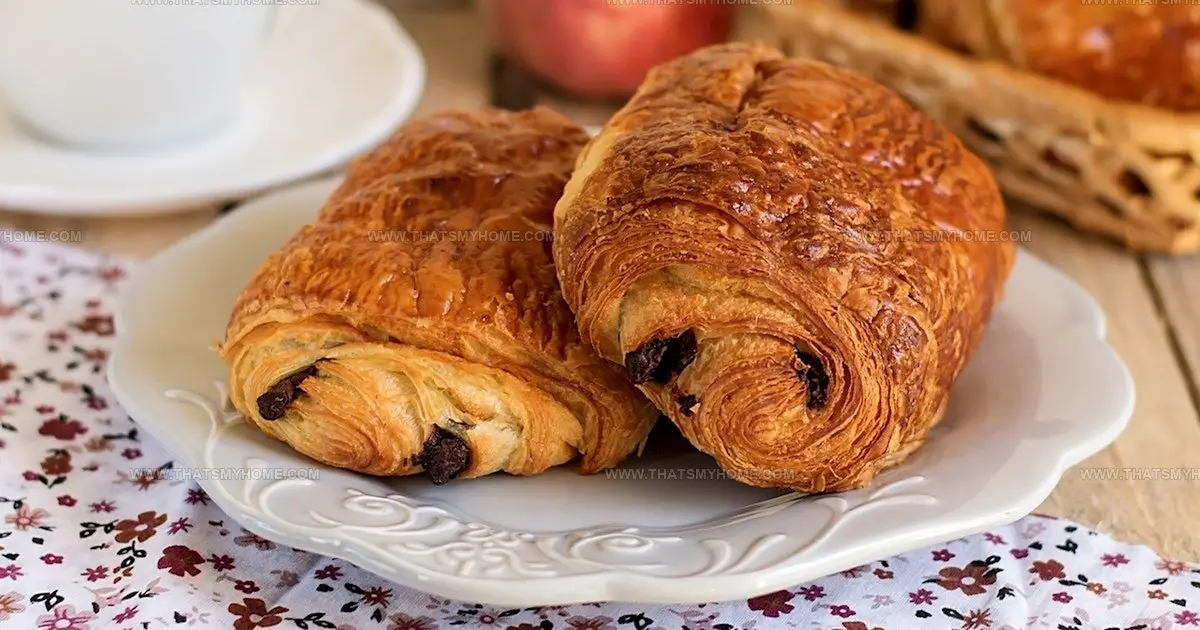
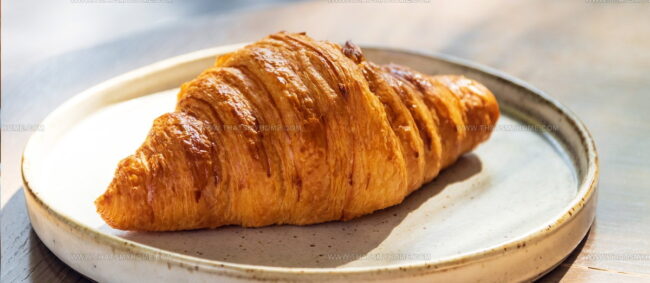
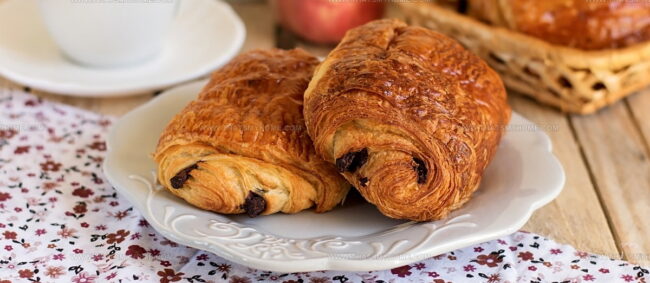
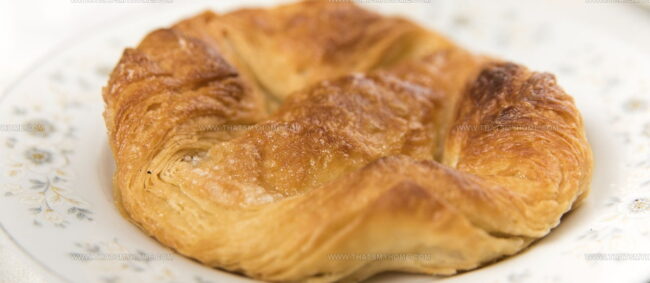
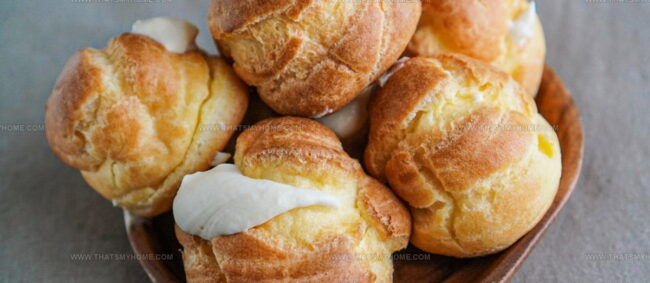
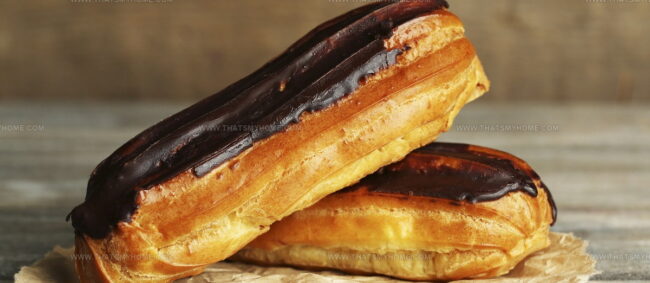
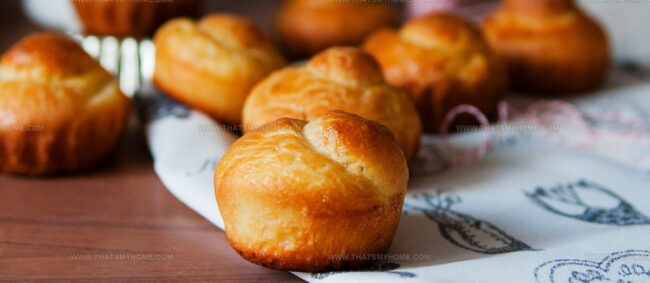
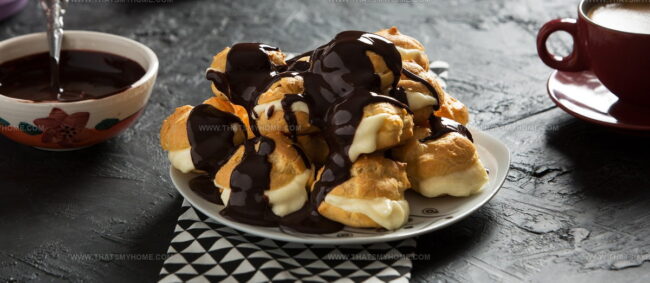
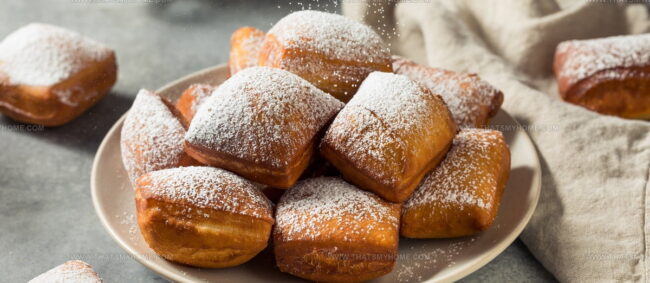
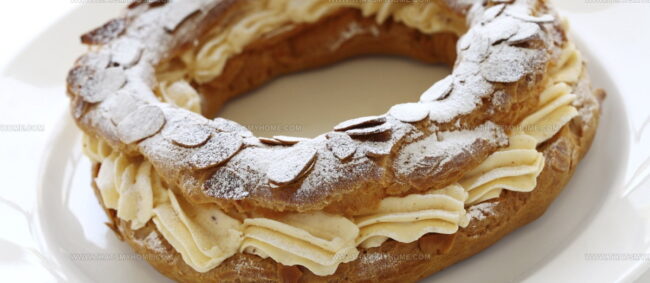
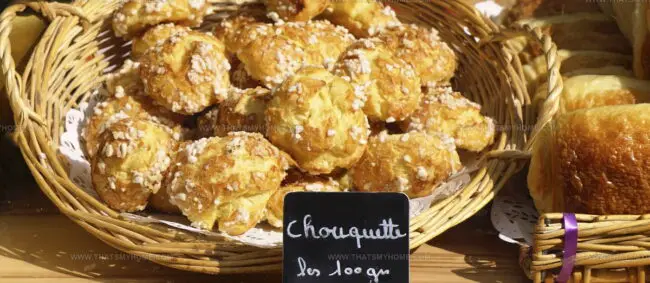
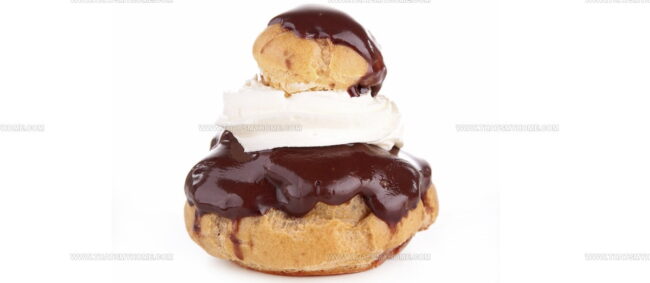
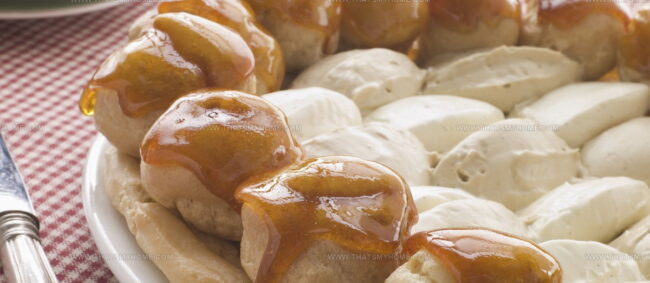
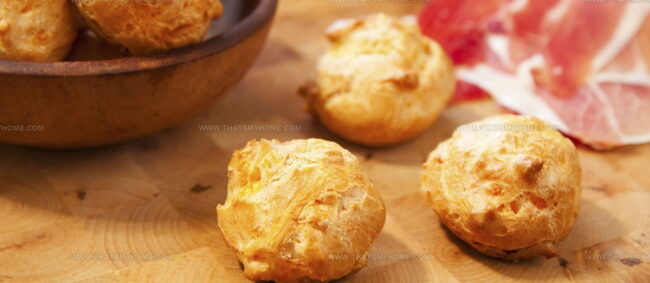
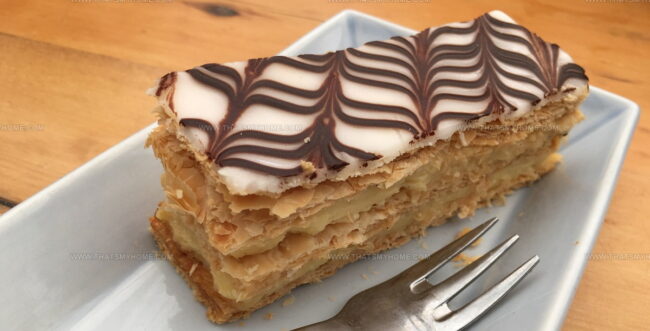
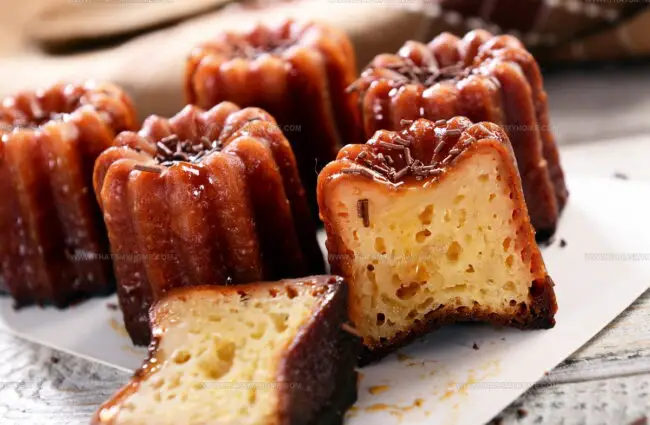
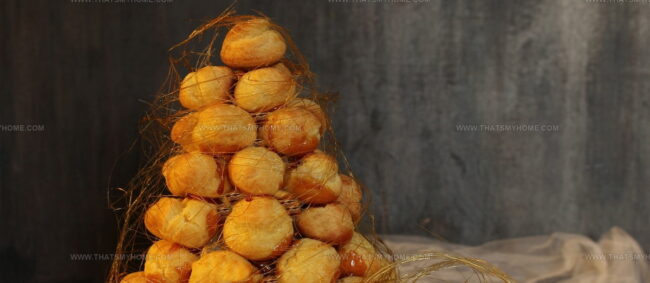
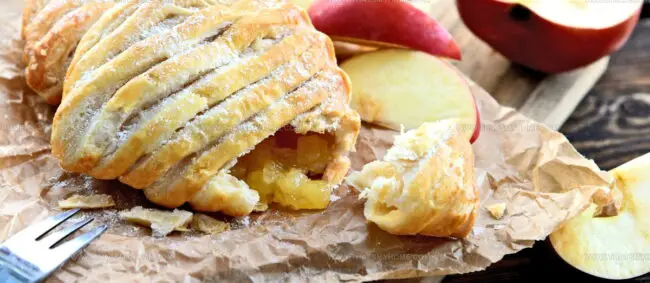
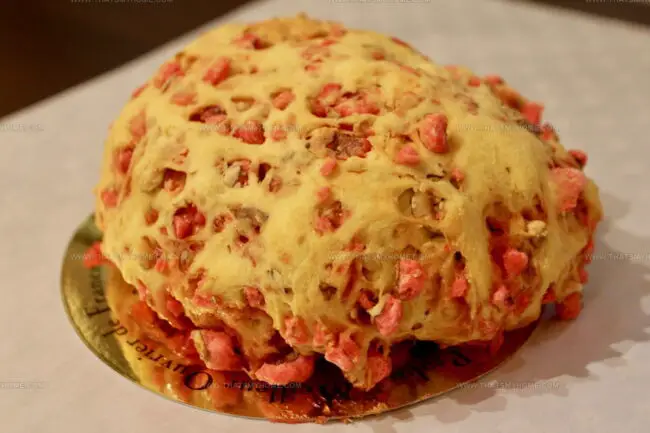
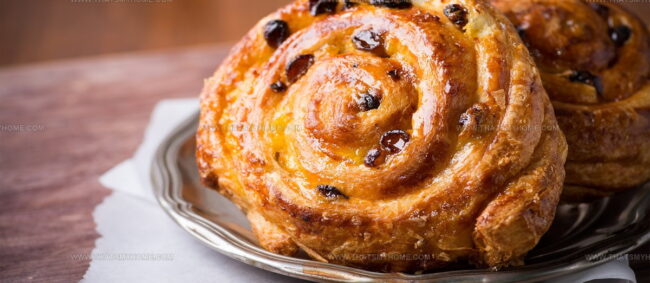
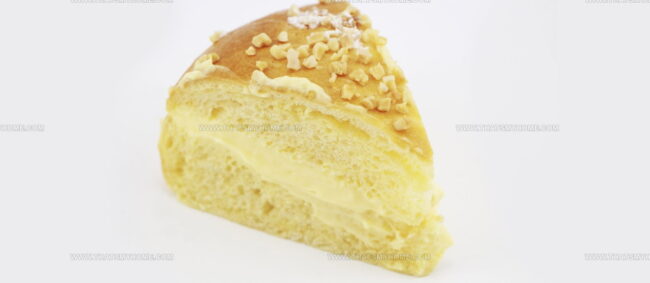
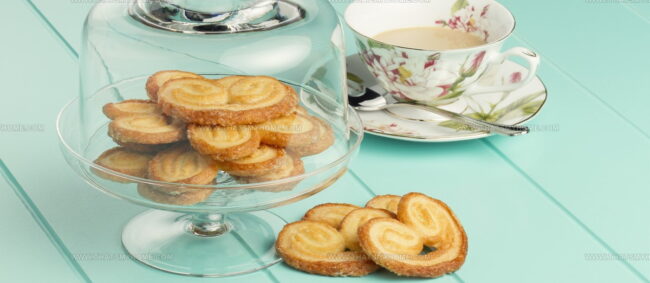
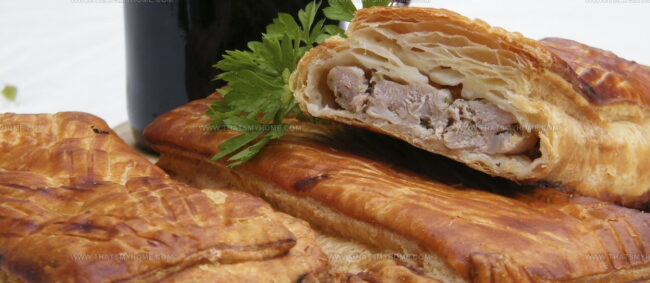
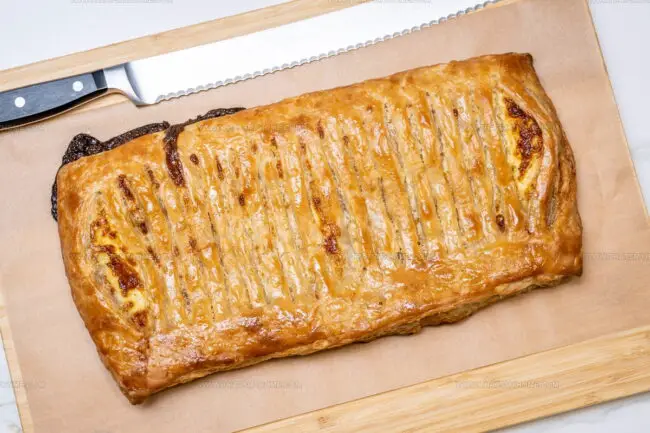
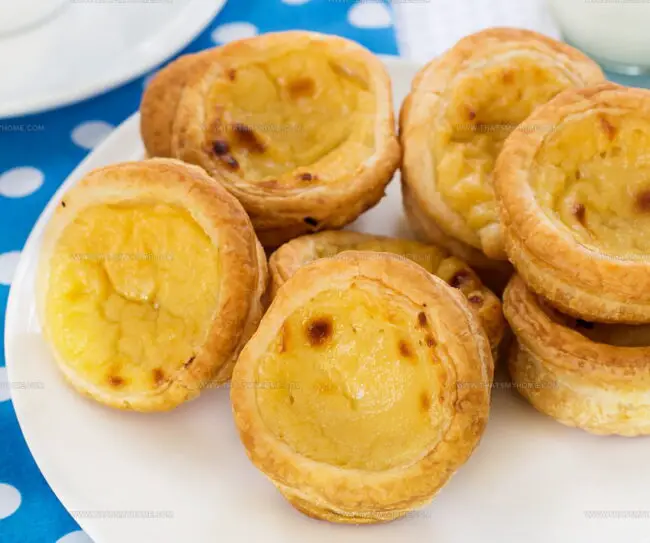
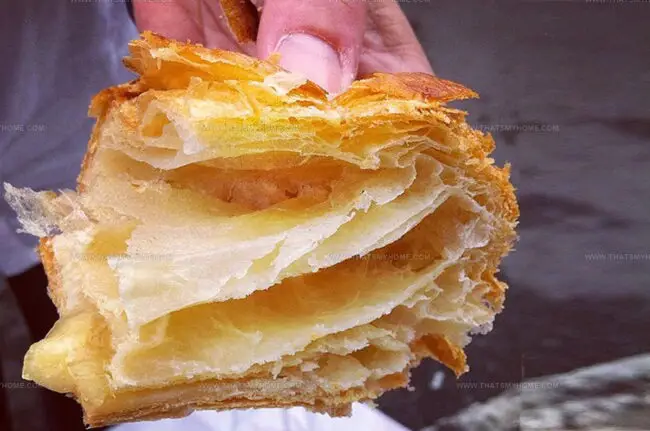
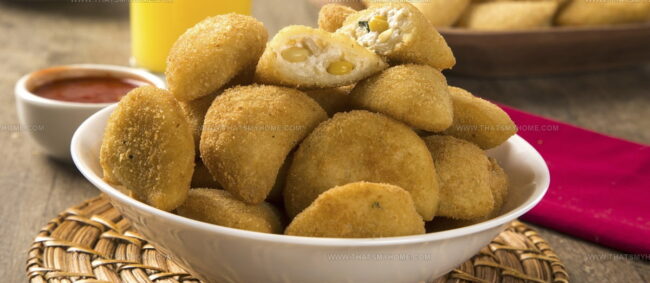
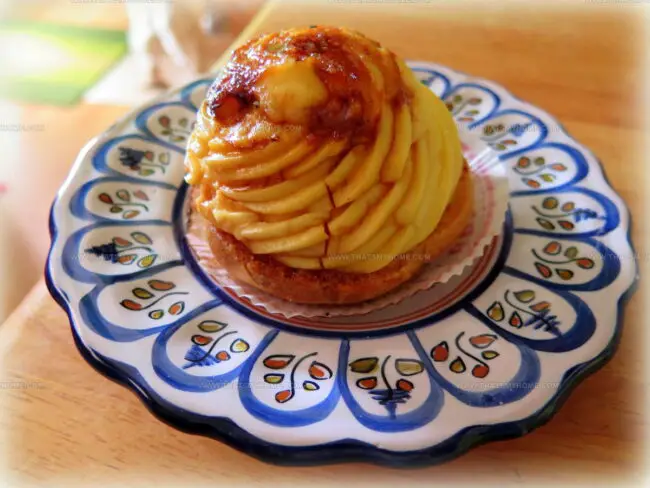
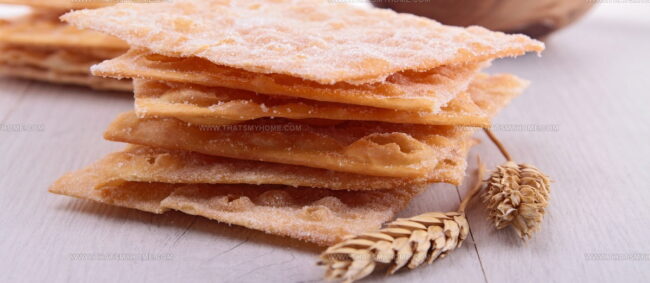
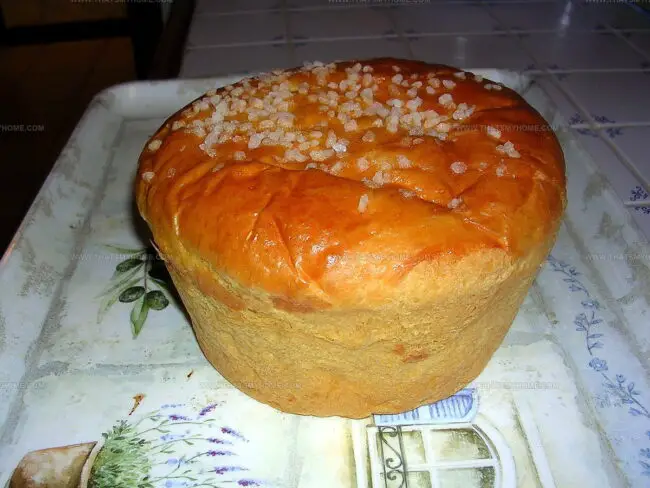
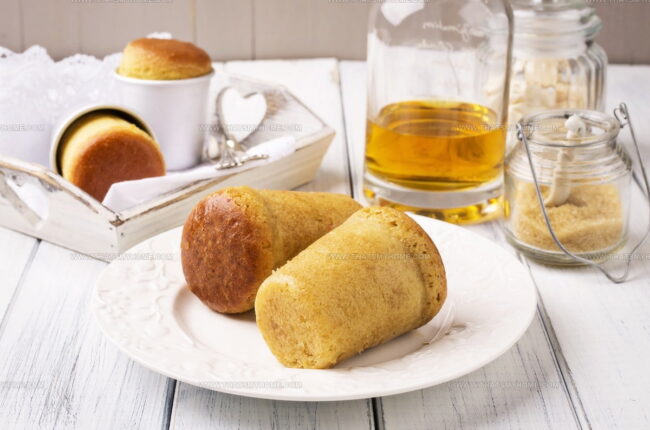
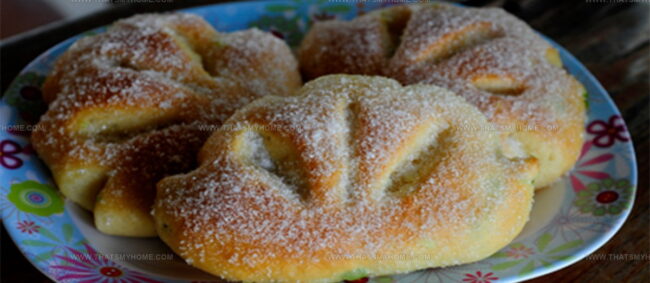
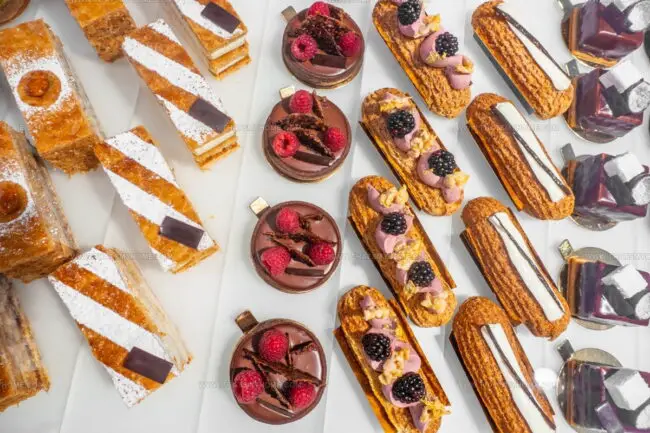

Mary Ellen
Founder, Pastry Chef & Recipe Developer
Expertise
Education
Savannah Technical College
Mary Ellen is the heart and soul of thatsmyhome.com. As the founder, pastry chef, and recipe developer, she refined her skills at Savannah Technical College with an Associate of Applied Science in Culinary Baking & Pastry Arts.
Mary blends classic techniques with modern twists to make artisanal breads, beautifully crafted pastries, and desserts full of unique flavor. Her passion is evident in every recipe, and she enjoys sharing her expertise through hands-on pastry workshops and insightful articles in local culinary magazines.